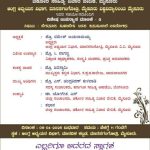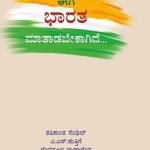ತಾಯ್ನುಡಿಯ ಉಳಿವಿನ ಕುರಿತು ರಾಷ್ಟ್ರಪತಿಗಳಿಗೆ ಒಂದು ಪತ್ರ
[ಭಾಷಾ ಮಾಧ್ಯಮ ವಿವಾದದ ಹಿನ್ನೆಲೆಯಲ್ಲಿ ಸುಪ್ರಿಂ ಕೋರ್ಟ್ ತೀರ್ಪಿನ ನಂತರ ತಾಯ್ನುಡಿಯ ಉಳಿವಿನ ಕುರಿತು ದೇವನೂರ ಮಹಾದೇವ ಅವರು 2014ರಲ್ಲಿ ರಾಷ್ಟ್ರಪತಿಗಳಿಗೆ ಬರೆದ ಪತ್ರ]
Sri Pranab Mukherjee
Hon’ble President of India
Rashtrapati Bhavan
New Delhi 100 001
Dear Sir
Subject: Saving Indian languages
You have magnanimously called a meeting to discuss the state of our native languages. May I take this opportunity to present my thoughts for your kind consideration?What does one say, what does one ask when 22 Indian languages recognised by the Constitution, besides a multitude of minority languages, lie inert, with their legs chopped off by a recent Supreme Court judgment?
While the debate about the medium of instruction was in progress, the newspapers reported a judge as saying, “A Supreme Court judge from Japan was in Delhi, and he spoke in English. No one would have understood him if he hadn’t spoken in English. Even China, which had conservative ideas about language, is opening up to the possibilities of English.”
This sounds a bit like the Kannadiga who returned from a visit to England long years ago and said, “Incredible! Even little children in that country speak English.”
If only the judge had pondered a bit, he might have got to know about Japan’s language policy, and realised that Japanese is the language of instruction in almost all Japanese schools, colleges and institutions of higher learning. It might have become apparent to him that in China, the languages of instruction are the mother tongues of Mandarin, Mongolian, Tibetan and Korean, and the country is spending heavily to teach English and Spanish only as languages, and only so that it can expand its empire.
Scandinavian and G-8 countries, besides other independent regions, employ the mother tongue as their natural medium of instruction even in higher education. The medium of instruction in South Korea and North Korea is Korean. If we need more examples, Khmer in Cambodia, Vietnamese in Vietnam, Thai in Thailand, Hebrew in Israel, and Lao—a language we might not have heard of—in Laos are in vogue, and all the way up to their institutions of higher education. In some places, they make marginal changes, but that’s it. In Malaysia, the colonial language of
instruction is being replaced by the mother tongue. The national schools teach in Bahasa Malaysia, while the regional schools use Chinese and Tamil to teach even maths and science. But in India, the Tamils only beat their breasts. Had their language grown as a medium of instruction, ours could have, too. The mother tongues of India are pathetically begging for a place at least in primary education.
To sum up, no independent nation has killed its mother tongue and embraced some other language. Some poor countries, crushed by internal problems, still hold up their mother-tongue medium of instruction as a symbol of their sovereignty. So what is wrong with India? We might have achieved freedom from physical slavery, but perhaps we aren’t cured of our psychological slavery yet?
Today, the world is driven by ‘development’ and competition. Even from this perspective, China, Japan, Korea and Thailand, countries in our vicinity with some complexity and diversity, are striding ahead. It is possible a connection exists between education in the mother tongue and their pace of development. When common education is provided in the mother tongue, skills and talents emerge from every nook and cranny of a populace, and the nation is enriched. Gainful,
skilled activities thrive in every household. Why isn’t this apparent to our legislature, executive and judiciary? Why isn’t this apparent to the globe-trotting IT-BT folks even from their profit perspective?
This is no inscrutable matter. India has overcome its practice of denying education to the Shudras, and is now talking about universal education. But it has incorporated into its education diseased caste and class divisions, and retained the discrimination and exclusion natural to its four-fold social hierarchy.
The Kothari Commission on Education had warned in 1963-64 that education, if it wasn’t common, would create deeper social divisions. Yet, India is practising a discriminatory education policy. What does this tell us? Perhaps India cannot sleep in peace if it isn’t practising discrimination and exclusion?
We have the infection of slavery on the one hand, and the infection of class and caste on the other. These must also have spread to the legislature, executive and judiciary. Thus, we have this education system where communities are separated, like at ritual meals (this is called pankti bedha in our languages). We lose out because we don’t realise that the biggest education for India would be for children of all castes, communities and religions to mix when their minds are still fresh and receptive.
Of course, the quality of government schools is declining every day. We are looking for explanations elsewhere. If common, neighbourhood schooling, with mother tongue as the medium of instruction, is implemented, the poor standards automatically give way to excellence. It is like this: In posh neighbourhoods, the quality of utilities is high. Water and power supply is not disrupted, like in poor neighbourhoods. Achieving excellence in schooling calls for no extra training, no amenities.
Because of unequal education, with no access to a common, neighbourhood education in the mother-tongue, village children, street children, and children from the oppressed communities are dropping out of school. Our half-hearted, discriminatory education system practises ‘inclusive exclusion’. It is flinging aside deprived children in such a way that they can never get up and go anywhere.English is colluding in this, and serving as a big filter.
Looking up to the judicial system isn’t helping, and our hopes and aspirations are fading. In its order on the medium of instruction, our Supreme Court has mixed up the freedom of expression with the freedom to choose the medium of instruction, and stretched it to fraying point. When freedom is stretched this way, doesn’t it become licentiousness?
The language a child learns naturally from its environment is its mother tongue. Our plight is that we are still debating this definition. Anything can happen in a situation like this. And a lot is happening.
Our Supreme Court has ruled the right to choose the medium of instruction lies with the child, and its parents on its behalf. When does the question of choice arise? When two or three options exist. When only one exists, where is the question of choice? The basic understanding of education is that it moves from the known to the unknown. Our court should have paid attention to this aspect at least. After a child has learnt reading and writing in the known language of its
environment naturally, then only the question of formally learning a second language would have come up. In post-primary education, wherever necessary, the language of instruction could have been reviewed. This is the wisdom of education. Our court has destroyed it.
When the states were formed on a linguistic basis, our Constitution-makers foresaw the dangers of majority state languages behaving like bullies and stifling other mother tongues coming under their wing (for example, Tulu, Urdu, Konkani, Marathi, Tamil, Telugu and Kodava in Karnataka), and so created strong, sword-like laws to protect minority languages. But these very laws are now being used to murder all regional languages, including the minority ones. It truly looks like we have no hope of survival.
But we have to confront this problem. This is not just a problem of language. It concerns the freedom, sovereignty, unity, and future of India. I request you to use your sagacity and wisdom to guide our central and state governments appropriately.
With thanks and regards
Devanoora Mahadeva







